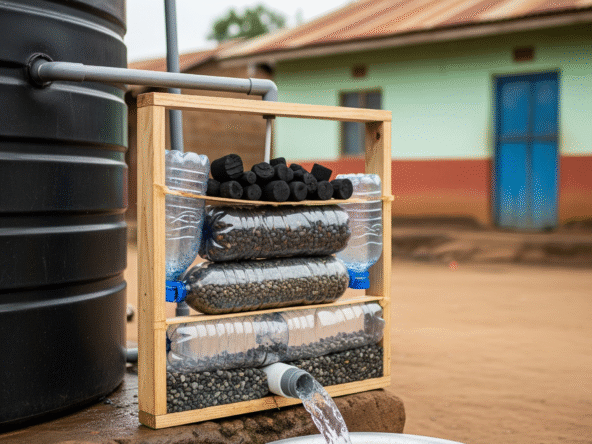Solar water pumps offer a dependable, low-cost solution for homes and farms across Kenya, particularly in rural and off-grid regions. However, like any technical system, these pumps can run into problems sometimes due to improper setup, poor maintenance, or environmental conditions.
This article outlines the most common solar pump issues, how to diagnose the root causes, and practical steps to fix them, whether you’re pumping from a borehole into a Kentank 5000L or managing a multi-tank system for livestock or irrigation.
1. Pump Not Starting or Inconsistent Power Supply
This is one of the most reported issues in solar setups.
Causes:
- Dirty or shaded solar panels
- Loose electrical connections
- Faulty solar controller
- Low sunlight levels (e.g. during rainy seasons in Nyeri or Limuru)
Solutions:
- Wipe panels with a clean cloth every week
- Inspect wiring for rusted or disconnected terminals
- Check the controller for warning lights or error codes
- Tilt and reposition panels for maximum sun exposure
For added protection, consider using a secure structure for your system. Learn more in Tank Shelters and Lockable Enclosures.
2. Water Flow Is Too Low
When the pump is working but the output is minimal:
Possible Causes:
- Clogged suction filter or pump inlet
- Undersized panel or pump relative to water lift height
- Obstruction or kink in pipes
- Solar panels partially shaded by foliage or buildings
Fixes:
- Clean or change the intake filter
- Re-check system sizing using this Tank Sizing Guide
- Replace pipes with wider diameter if pressure loss is high
- Trim shading objects and clean panel surfaces
3. Pump Runs but No Water Comes Out
If the motor works but water isn’t reaching the tank:
Likely Reasons:
- Airlock in the pipeline
- Borehole or water source has run dry
- Suction pipe not submerged properly
- Malfunctioning non-return (foot) valve
What to Do:
- Re-prime the system to expel trapped air
- Wait for the water source to replenish if seasonal
- Confirm suction depth matches pump specs
- Replace damaged valves or pipes
To prevent dry-running damage, install a Float Switch System.
4. Pump Starts Then Shuts Down After a Short While
Frequent cycling could point to a hardware or configuration issue.
Causes:
- Overheating from blocked impellers
- Incorrect pump-to-panel match
- Controller errors or overload protection triggered
- Tank already full with no auto shutoff
Solutions:
- Remove and clean impellers or sediment traps
- Use a controller compatible with your pump model
- Install float switches for automatic stop once the tank fills
- For complex layouts, consider a Multi-Tank Linking System to distribute flow evenly and reduce system stress
5. Tank Overflows or Water Wastage
Overflowing water tanks waste energy and water, especially in sunny areas where pumps run for extended periods.
Causes:
- No automatic cutoff installed
- Overflow pipe blocked or missing
- Oversized pump for tank capacity
Fixes:
- Install a Float Switch and Refill System
- Unclog overflow outlets or reposition them
- Downsize the pump or create a secondary tank buffer
6. Water in Tank Smells Bad or Looks Dirty
This is typically a tank hygiene issue but affects overall pump efficiency and user safety.
Why It Happens:
- Algae growth in exposed tanks
- Dirty water source, especially in open ponds or shallow wells
- Failure to clean the tank regularly
Fixes:
- Use opaque, covered tanks to reduce UV exposure
- Install inline filters between the pump and tank
- Follow this Household Tank Cleaning Guide
Solar water pumps are a powerful tool for water access in Kenya’s rural and peri-urban communities. By knowing how to troubleshoot issues like low pressure, power interruptions, dry pumping, or overflow, you can extend the life of your system and avoid costly repairs.


